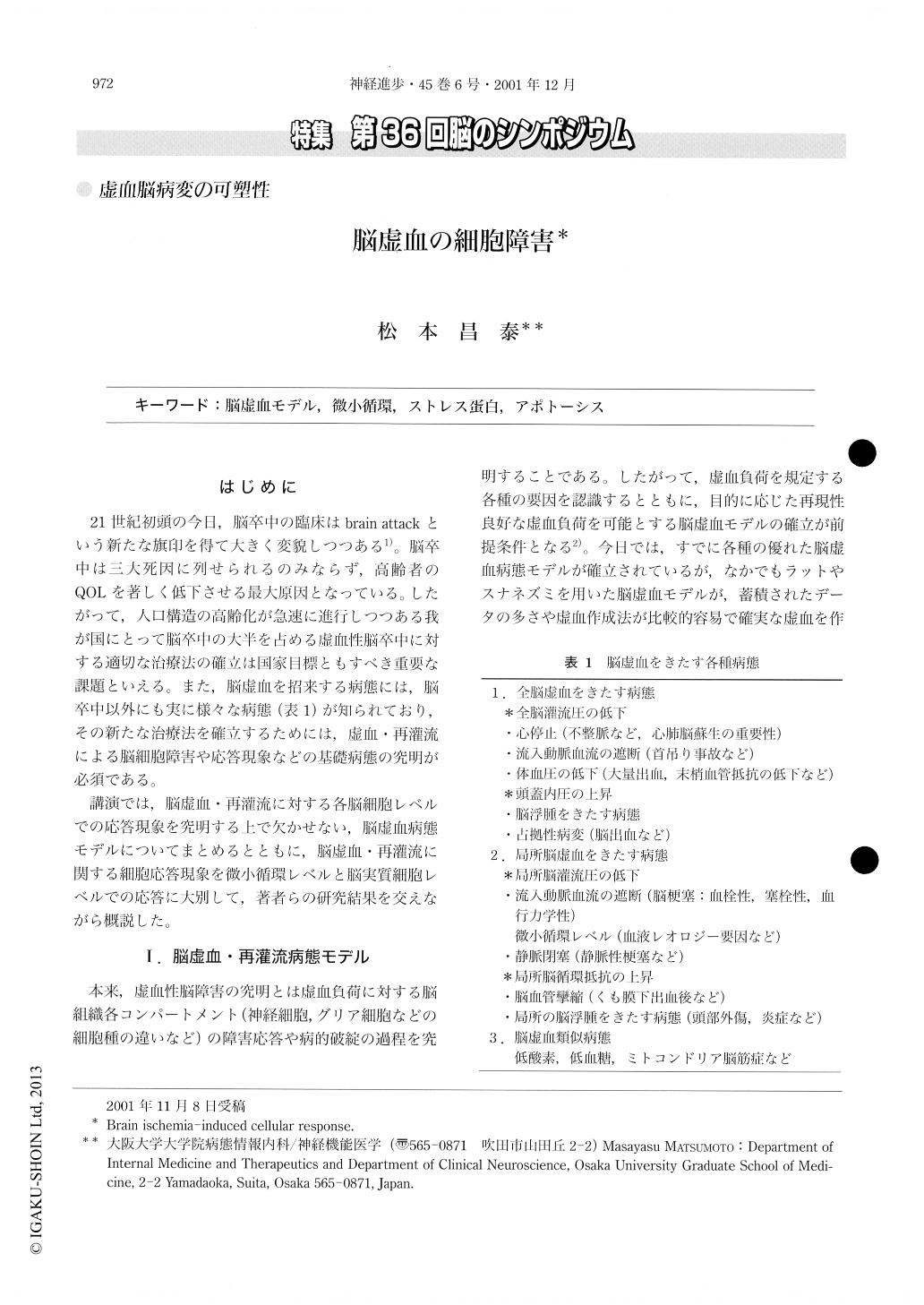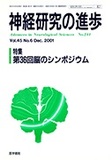Japanese
English
- 有料閲覧
- Abstract 文献概要
- 1ページ目 Look Inside
はじめに
21世紀初頭の今日,脳卒中の臨床はbrain attackという新たな旗印を得て大きく変貌しつつある1)。脳卒中は三大死因に列せられるのみならず,高齢者のQOLを著しく低下させる最大原因となっている。したがって,人口構造の高齢化が急速に進行しつつある我が国にとって脳卒中の大半を占める虚血性脳卒中に対する適切な治療法の確立は国家目標ともすべき重要な課題といえる。また,脳虚血を招来する病態には,脳卒中以外にも実に様々な病態(表1)が知られており,その新たな治療法を確立するためには,虚血・再灌流による脳細胞障害や応答現象などの基礎病態の究明が必須である。
講演では,脳虚血・再灌流に対する各脳細胞レベルでの応答現象を究明する上で欠かせない,脳虚血病態モデルについてまとめるとともに,脳虚血・再灌流に関する細胞応答現象を微小循環レベルと脳実質細胞レベルでの応答に大別して,菩者らの研究結果を交えながら概説した。
Since the first documentation of the induction of heat shock protein following transient cerebral ischemia, much experimental evidence suggested that all of the cellular elements in the central nervous system show dynamic stress responses depending on the degree of environmental changes induced by ischemia and reperfusion. In this review, first I focused on the importance of the usage of an appropriate experimental model for brain ischemia and reperfusion, and I presented our work on mouse models of transient global and focal ischemia.

Copyright © 2001, Igaku-Shoin Ltd. All rights reserved.


